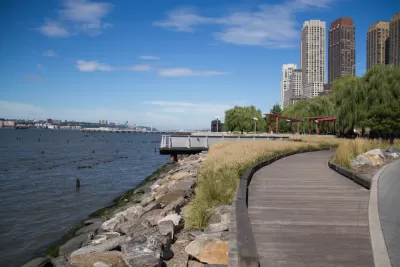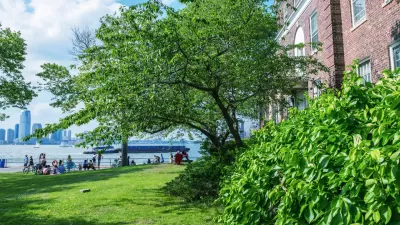The private non-profit organizations that support half of New York City's public parks anticipate up to a 60% decrease in funding at a time when people rely on parks more than ever before.

Budget cuts to the New York City Department of Parks and Recreation funding in the 2021 fiscal year suggest hard times ahead for the city's public green spaces and park system, reports Jonathan Hilburg. At the beginning of May, Parks and Open Space Partners, an alliance of 25 nonprofit organizations that raise about $150 million in funding for public parks annually, published a "Report on COVID-19 Impacts on Public Spaces."
"According to the groups surveyed in the Parks and Open Space Partners – NYC COVID-19 Impact Report, it’s expected that on average, parks were anticipating a revenue loss of 32 percent, with one park in particular expecting to lose up to 68 percent. In practical terms, that means city parks will likely see a funding reduction of over $37 million from those groups," writes Hilburg.
Hilburg recounts a loss of as many as 40,000 park maintenance hours among other dreary statistics published in the report. Increasing numbers of people accessing public parks and postponed maintenance do not bode well for New York City's parks.
FULL STORY: A hidden victim of the coronavirus pandemic? NYC’s parks

Planetizen Federal Action Tracker
A weekly monitor of how Trump’s orders and actions are impacting planners and planning in America.

Chicago’s Ghost Rails
Just beneath the surface of the modern city lie the remnants of its expansive early 20th-century streetcar system.

San Antonio and Austin are Fusing Into one Massive Megaregion
The region spanning the two central Texas cities is growing fast, posing challenges for local infrastructure and water supplies.

Since Zion's Shuttles Went Electric “The Smog is Gone”
Visitors to Zion National Park can enjoy the canyon via the nation’s first fully electric park shuttle system.

Trump Distributing DOT Safety Funds at 1/10 Rate of Biden
Funds for Safe Streets and other transportation safety and equity programs are being held up by administrative reviews and conflicts with the Trump administration’s priorities.

German Cities Subsidize Taxis for Women Amid Wave of Violence
Free or low-cost taxi rides can help women navigate cities more safely, but critics say the programs don't address the root causes of violence against women.
Urban Design for Planners 1: Software Tools
This six-course series explores essential urban design concepts using open source software and equips planners with the tools they need to participate fully in the urban design process.
Planning for Universal Design
Learn the tools for implementing Universal Design in planning regulations.
planning NEXT
Appalachian Highlands Housing Partners
Mpact (founded as Rail~Volution)
City of Camden Redevelopment Agency
City of Astoria
City of Portland
City of Laramie





























